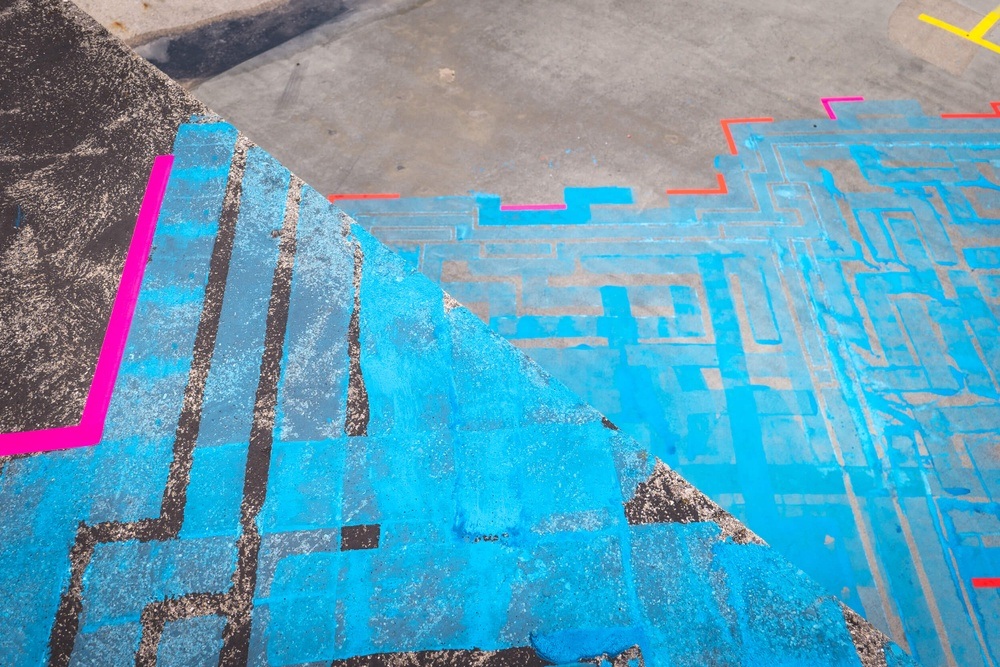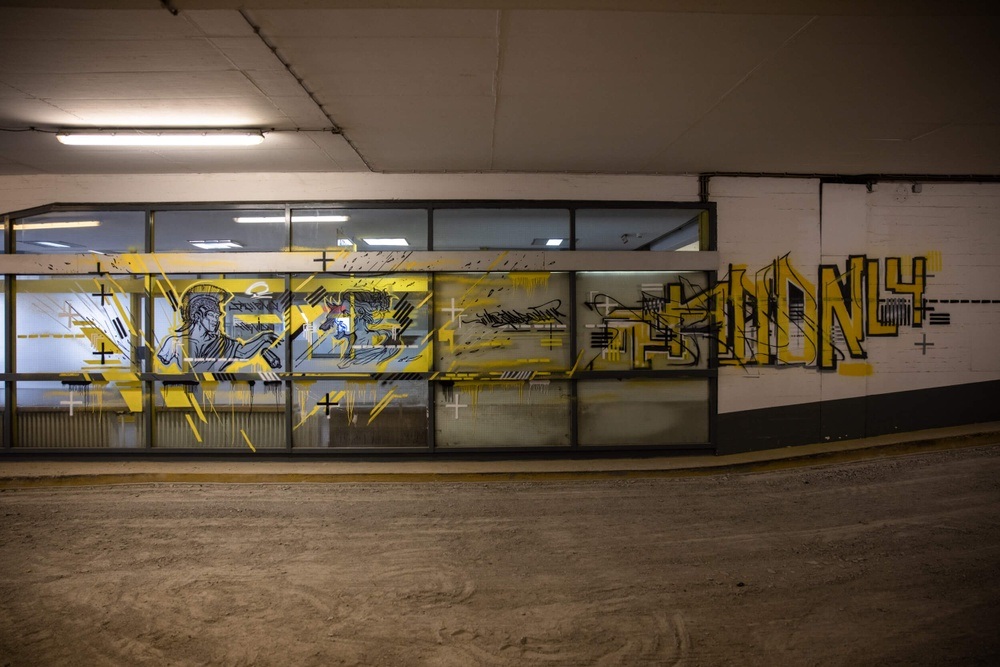Young art from Munich: Broke.today
In our new interview series, we want to introduce you to young artists and creative minds who are making Munich a little louder, more colorful and better with their art and projects. In the first episode, we talk to graffiti artists Ralf Spitzer (Shamey ABC), Erik Mayer, Dino Maat and Gerald W. Jegal from the art collective Broke.Today, which has already caused a stir with various temporary uses. Until recently, they used a condemned building in the middle of Maxvorstadt and were allowed to let off steam in the old FINA parking garage in Hildegardstraße, which will also soon be demolished. They spoke to editor Julia about the collective's work, Munich and the temporality of graffiti.
MunichMag: How long has the collective Broke.Today existed?
Erik: The collective was founded two years ago by Fillin Guas and others in the Container Collective at Ostbahnhof. Broke.today is a lifestyle and a mindset that we use. I joined last year in June, when the collective was active in the 089 Bar to get the whole club ready.
Gerald: The idea of the collective has been around for three years. Fillin Guas had this utopian idea in mind of restoring Munich to the state it was in in the 1970s, when it was a subcultural hotspot where Freddy Mercury and numerous major international artists regularly spent time. The city was a creative mecca. This has changed enormously in the last 40 years, with a conservative veil hanging over everything.
And you want to change that?
Gerald: Graffiti is actually a phenomenon that comes from Munich. The German scene originated here. Over time, it has somehow changed and Berlin has developed into a subcultural hotspot. We don't want to change that, we just want to show the people of Munich that there is something here, that we are doing something here. We want to offer the artists who live here space and opportunities to show themselves and face the public. The subculture should have a voice.
So you offer the subculture a platform. I find it very exciting how you can operate in public spaces. How do you find the locations for your projects?
Erik: It always varies. Fillin Guas is very active and has a lot of contacts. Our events, such as in the 089 Bar or Kaufinger Passage, also bring us to the attention of a wide variety of people. It happens in all kinds of ways, sometimes privately, sometimes via social media and sometimes by chance. For example, Dino Maat was able to organize the Trap House in Maxvorstadt. We were able to stay there for a month.
How many people are currently active in your collective?
Gerald: It changes all the time. The hard core is around ten people and around that there are a lot of artists, around 30, but not everyone always has time. We do it full-time, but many others do it alongside their jobs. We also want to show this: Art? Dare to do it! It's difficult, but it's a profession and you can do it.
 © Matze Ried
© Matze Ried
I find it interesting that the idea of Broke.Today was founded in the Container Collective, as it is one of the few projects with which the city of Munich tries to promote subculture.
Gerald: You can now see that a lot has happened in the city in terms of subculture over the last two years. More and more small cells are popping up, which is exciting and gives the whole thing a real dynamic. It also shows that subculture is important for a metropolis like this. It attracts talented young people, who in turn contribute to the economy and make Munich an attractive location.
What would you like to see from the city?
Gerald: I would like the business community and the city to see more sense behind it, the economic benefit. Culture is important for a city of this size, Munich is not a village. We can't keep up these conservative thoughts, we have to open up, otherwise Munich will develop into a monoculture. Then young people will leave the city and innovation will be lost.
It's probably also a fundamental problem how urban art and graffiti are perceived by the majority of urban society. But that is also changing a lot, isn't it?
Ralf: A lot has changed! Compared to 10 years ago, people have become much more tolerant, but Munich is still behind other cities when it comes to the amount of legal space for graffiti art. Other cities have more legal space, more open space. Here, uncontrolled growth is not welcome.
 © Matze Ried
© Matze Ried
In Munich, there are really only the areas around Bahnwärter Thiel where you can really spray freely, right?
Ralf: That's right. Space is very limited here. There is also a legal open space at the Brudermühlbrücke, but only certain people are allowed to paint there. Events take place there where everything is redesigned. I think that's a shame, there are so many cool areas where you could create something new and leave it there.
How do you feel when your works are created in temporary spaces and then disappear again?
Ralf: I come from the classic graffiti scene, I really learned it on the S-Bahn and there's only one photo left. In the meantime, our work has become much more widespread thanks to social media and is therefore also accessible to the public. In many cases, you actually make your work for the photo, for documentation. It gives you a memory. You do certain things simply because it's fun and because you live in the moment. It was the same here on the roof of the parking garage. This amazing view, the sun was shining and we painted our pictures.
Want to see more from the Broke.Today art collective? Then take a look at their Instagram.

